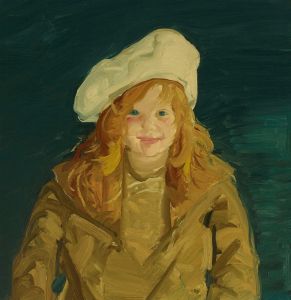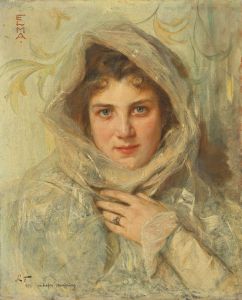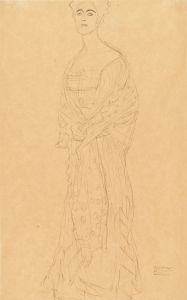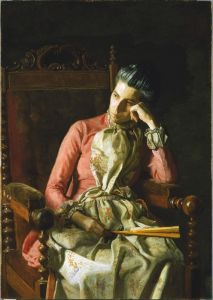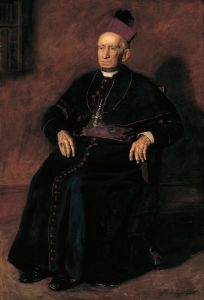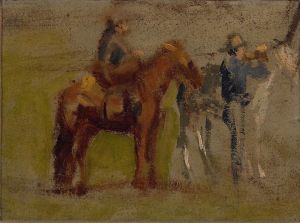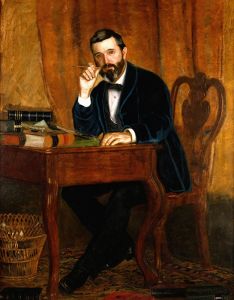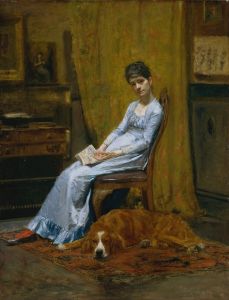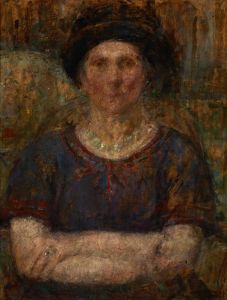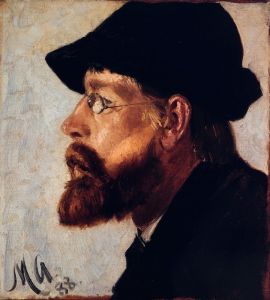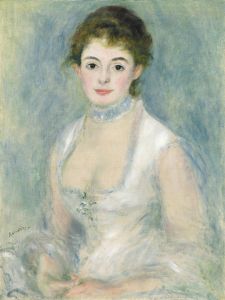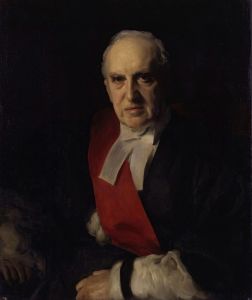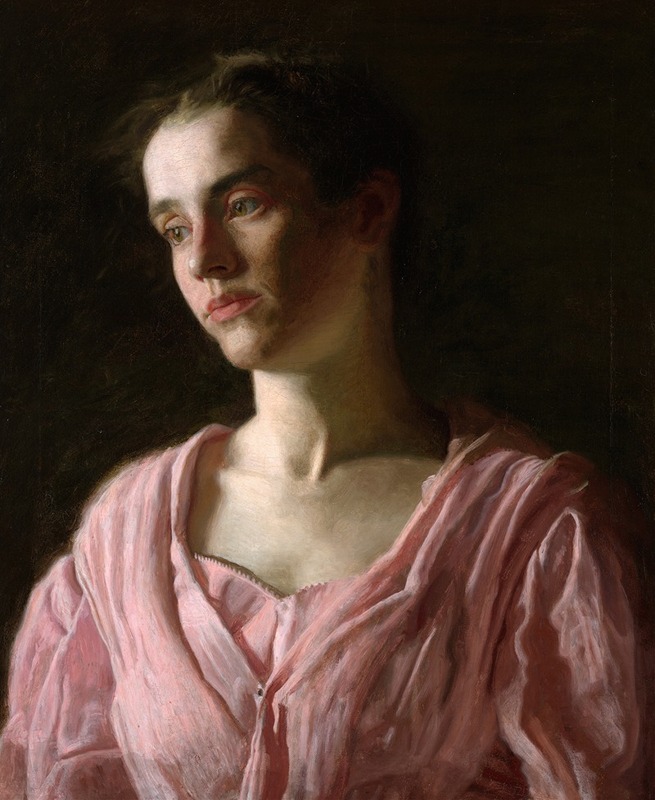
Maud Cook Reid
A hand-painted replica of Thomas Eakins’s masterpiece Maud Cook Reid, meticulously crafted by professional artists to capture the true essence of the original. Each piece is created with museum-quality canvas and rare mineral pigments, carefully painted by experienced artists with delicate brushstrokes and rich, layered colors to perfectly recreate the texture of the original artwork. Unlike machine-printed reproductions, this hand-painted version brings the painting to life, infused with the artist’s emotions and skill in every stroke. Whether for personal collection or home decoration, it instantly elevates the artistic atmosphere of any space.
"Maud Cook Reid" is a portrait painting by the American artist Thomas Eakins, who is widely regarded as one of the most important and influential American painters of the 19th century. Eakins is known for his realistic and meticulous approach to portraiture and his dedication to capturing the true essence of his subjects.
The painting depicts Maud Cook Reid, a young woman who was part of Eakins' social circle in Philadelphia. The exact date of the painting is not definitively known, but it is believed to have been created in the late 19th century, during a period when Eakins was actively producing some of his most significant works.
Thomas Eakins was born on July 25, 1844, in Philadelphia, Pennsylvania. He studied at the Pennsylvania Academy of the Fine Arts and later in Paris at the École des Beaux-Arts, where he was influenced by the techniques of European masters. Eakins returned to Philadelphia and became a prominent figure in the American art scene, known for his commitment to realism and his innovative use of photography to aid his painting process.
Eakins' portrait of Maud Cook Reid exemplifies his skill in capturing the individuality and character of his subjects. The painting is characterized by its detailed rendering of the sitter's features and the subtle play of light and shadow, which gives the portrait a lifelike quality. Eakins' use of a muted color palette and his attention to the textures of the clothing and background further enhance the realism of the work.
Maud Cook Reid is depicted with a calm and composed expression, her gaze directed slightly away from the viewer. Her attire and hairstyle reflect the fashion of the time, and Eakins' careful attention to these details provides a glimpse into the social and cultural context of the period. The background of the painting is simple and unobtrusive, allowing the focus to remain on the subject.
Eakins' portraits are often noted for their psychological depth, and "Maud Cook Reid" is no exception. The painting conveys a sense of the sitter's inner life and personality, making it more than just a mere likeness. This ability to capture the essence of his subjects is one of the reasons why Eakins is considered a master of portraiture.
Throughout his career, Thomas Eakins faced both acclaim and controversy. His unflinching realism and his use of nude models in his art classes at the Pennsylvania Academy of the Fine Arts led to conflicts with the institution's administration, ultimately resulting in his resignation in 1886. Despite these challenges, Eakins continued to produce significant works and left a lasting legacy in American art.
"Maud Cook Reid" remains an important example of Eakins' portraiture, showcasing his technical skill and his ability to convey the humanity of his subjects. The painting is part of the rich body of work that has cemented Thomas Eakins' reputation as one of America's greatest artists.





